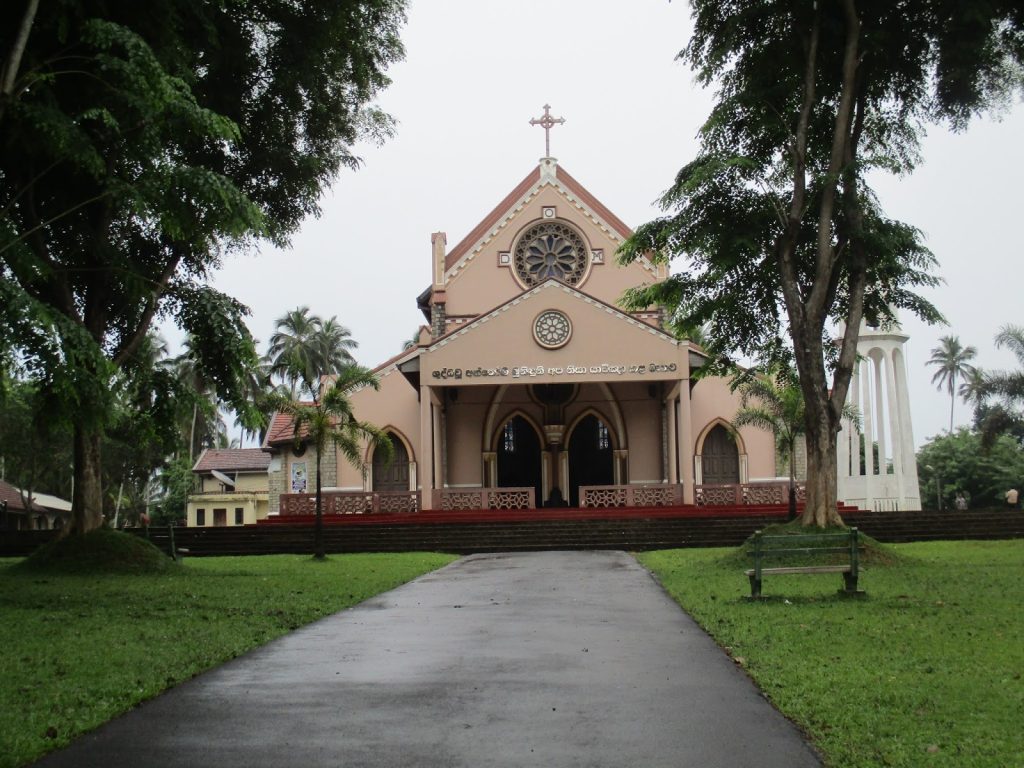St. Anthony’s Shrine Wahakotte, Sri Lanka is the cathedral church of the Diocese of Kandy in Wahacotte. The church is located in Wahacotte, in the north of Matale District, Sri Lanka, about 32 km from Matale. Considered to be one of the most important pilgrim sites for Catholics in the country, people from all over Sri Lanka come to visit this holy Wahakotte Church. This historic church is dedicated to Saint Anthony, and it has also been given the title of a national shrine.
St. Anthony’s Church Wahakotte is a well-known pilgrim center, enshrining a miraculous statue of St. Anthony of Padua for veneration that was brought down from Portugal by the original settlers. This statue is made of wood and is just six inches tall. It is the only statue with a unique characteristic found in Sri Lanka. St. Anthony is a Catholic saint born in 1195 in Lisbon, Portugal. There are thousands of recorded miracles attributed to St. Anthony during his lifetime and also after his death. He died in Padua on June 13, 1231, and Catholics celebrate his “feast” on this day.
Wahakotte stands tall as the oldest and largest shrine dedicated to St. Anthony in Sri Lanka, with a background of historical importance and a serene atmosphere with natural, scenic, and rustic beauty. In 1970, through a gazette notification on a special Act of Parliament, “the Act of Wahacotte,” this historic place was proclaimed to be a gazetted national pilgrim centre that enjoys state patronage.
St. Anthony’s Shrine Wahakotte Contact number: 0662 289 210
Related Post: Holy Cross National Shrine, Marawila, Sri Lanka
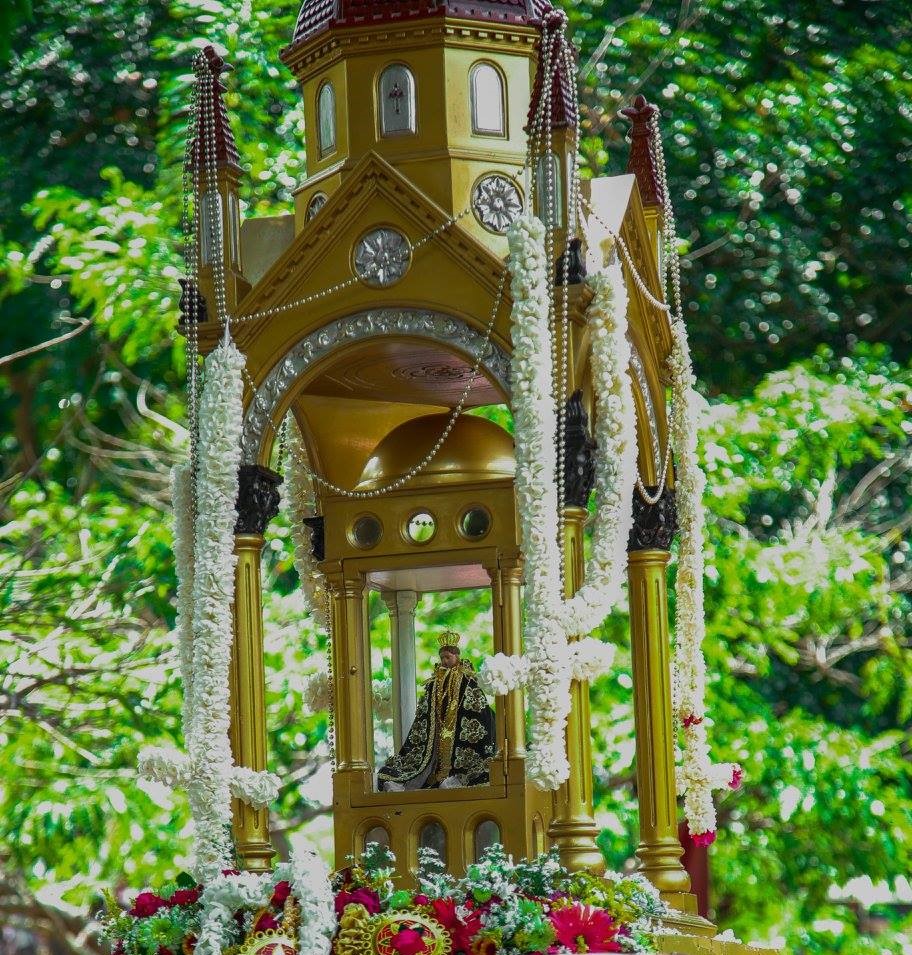
History of St. Anthony’s Shrine Wahakotte
Wahakotte was known as “Wasala-Kotte” (Castle in the Fort), and it is believed that there was a palace and a fort where the present church is situated; the village was so called because it protected the palace, traces of which are still visible. There is another legend to say that “Waha (poison) and “Kotte” (pillow) mean poisonous pillow, because a queen committed suicide after hearing of her husband’s death at war. History records that when king Dutugemunu defeated king Elara in 164 B.C., he had built a small fortress at Wahakotte. There are still some ruins of ancient buildings on a rocky hill called “Maligatenna,” or palace field.
These ruins show that Wahakotte was once a prosperous town with a fort, ramparts, a moat, and thoroughfares, where sub-kings lived. One can see Dambulla Rock Temple to the north from Maligatenna. The Ceylon Alamanac records that there were ruins of “Rangalle Nuwara” and a Hindu kovil, “Pattini Devalaya,” in the woods close by. History records that the first Christian Monarch, Yamasinghe, was the adopted son of Karalliyadda Bandara, who later became Don Phillip after embracing Christianity in Goa, India, and was crowned at Wahakotte by the Portuguese. It is also recorded that Don Francisco Wijekoon, who organised the Kandyan rebels against King Rajasinghe, was present on this occasion.
After king Senarath, Prince Maha Asthana ascended the throne of Kandy as King Rajasinghe II (1635–1687). He was a great king and acted with strong determination to repel the Portuguese from this country. It all began during the time of the persecutions by the Dutch. The Catholics fled the Dutch-controlled areas, searching for refuge under the patronage of King Rajasinghe II of the Kandyan Kingdom, and the king settled the Portuguese Christians at Wahacotte.
King Rajasinghe of Kandy, who fought against the Portuguese, captured some of them and made them settle down in Wahakotte. The village of Wahakotte was one such locality where they sought refuge. Wahacotte is a rural Catholic village, and its origins lie with the Portuguese. These captured people earned their living by engaging themselves in cultivation, business, and trade, with women sewing dresses for women, men sewing dresses for men; some engaged themselves in running taverns and making liquor. (Robert Knox, page 248).
After King Rajasinghe II, his son Vimaladharmasuriya II (1687–1707) ascended the throne. It’s claimed that he is a peace-loving king. The King allowed the Portuguese Catholics, who were undergoing severe persecutions under the Dutch, to come into his kingdom. The persecuted Catholics, who moved inland to escape the clutches of the Dutch, chose Wahacotte since there was a Catholic presence. The original settlers had begun their devotion and veneration in a cadjan hut, which was a cattle shed during the day and became a place of prayer and veneration at night. For a very long period of time, they preserved the Catholic faith intact without the services of an ordained minister.
Vira Parakrama Narendra Sinha (1707–1739) was the last Sinhalese King of Sri Lanka in the Kingdom of Kandy. The son of Vimaladharmasurya II, Narendrasinha, ascended to the throne when he was 17 years old and reigned for 32 years. He was also known as the “Prince of Kundasale.”. Vira Parakrama Narendra Singha was believed to be a considerably pious monarch, and like his predecessor, he lived at peace with the Dutch invaders and devoted himself to the furtherance of literature and religion.
King Sri Vijaya Rajasinghe (1739–1747) was a member of the Madurai Nayak Dynasty and succeeded his brother-in-law, Vira Narendra Sinha, as the King of Kandy. In his reign, the ministers fulfilled the requests of the Dutch and acted according to their own desires. As a result, the dissava (Kandyan chiefs) instructed their provinces, where Christians resided, to capture the missionaries and bring them to the capital. They were also ordered to confiscate any property belonging to the missionaries and destroy the churches. Additionally, all church property was confiscated on March 17, 1744. The Nayakkar king, Sri Vijay Rajasinghe, expelled all the Catholic priests from Kandy.
Immediately after this act was done, there was a severe drought in the upper country, and there was an epidemic and famine. A rumor spread throughout the country that it was the punishment of nature for expelling the Catholics from Kandy. It is said that the king, frightened by this, brought back the Catholics and granted them the village of Wahakotte. It is also said that King Sri Vijaya Rajasingha also built a church to offer sacrifices to the Portuguese and Christians. Sri Vijaya Rajasinghe’s reign was complex, marked by his attempts to reintroduce upasampada ordination while persecuting Catholics.
Since King Sri Vijaya Rajasinghe had no sons, his Queen’s younger brother became the king of Kandy under the name, Kirthi Sri Rajasinghe (1747–1781). He allowed the Catholics to perform their religious activities and gave them freedom of worship as a token of goodwill. He gave back the statue of St. Anthony, which was plundered from a church in Kandy during the reign of his brother-in-law Sri Vijaya Rajasinghe (1739–1747), to the Catholics of Wahakotte.
The people of Wahakotte are slightly fairer in complexion compared to other rural people in the area, though there are also very dark people among them. Because of this complexion, neighbouring villagers still refer to them as “Pruthugeesi,” or the decendants of “Parangi.” Some had Kandyan names mixed with Portuguese names, like Don Juan Wijeratne or Dona Issabella Ekanayake. When the Dutch captured the areas that were under Portuguese rule, they confiscated all catholic institutions, churches, schools and religious places, chased away the Catholic priests and banned all religious activities.
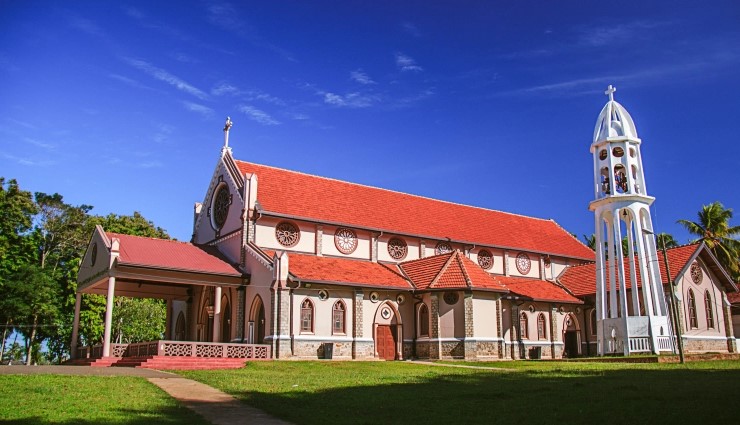
Visit of Fr. Joseph Vaz: The Apostle of Sri Lanka
The Kandy kingdom became a Catholic stronghold when Dutch colonizers, who were Protestants, persecuted Portuguese Catholics, forcing them to flee from other parts of Ceylon (the old name of Sri Lanka). Blessed Joseph Vaz, the Apostle of Sri Lanka, who arrived in Sri Lanka from South India, disguised as a labourer, had visited Wahakotte. Fr. Joseph Vaz Vaz began serving the Catholics and carried out his evangelization efforts from his first mission center in a hideout, due to hostilities towards Christians in the area.
The peasants there had built a little hut on a small hill for Fr. Joseph Vaz, which is still venerated by Catholics. Joseph Vaz administered the sacraments and gave an organised structure to this community by appointing Muhupoos (the leader of the Catholic community) and Annavis (the prayer leaders). This solidified the fervour of the people and laid a firm foundation for the sustainability of the Catholic religious identity of Wahacotte. A severe drought hit Kandy, and then, the Catholics led by Father Vaz prayed to St. Anthony for three days, and torrential rain drenched Wahakotte and Kandy.
These straits of his missionary strategies are very prevalent even today. As the Catholics of Wahakotte faced much harassment from the Dutch and the Kandyan rulers, they erected a place of worship in a secret place, during the time of Fr. Joseph Vaz, and during the daytime it looked like a cattle shed, but at night it became a prayer room. Today there stands a newly built octagonal-shaped monument as a rightful recognition and remembrance of the ministry of the apostle of Sri Lanka, at Wahacotte. Pope Francis canonized Father Joseph Vaz during his visit to Sri Lanka in 2015.
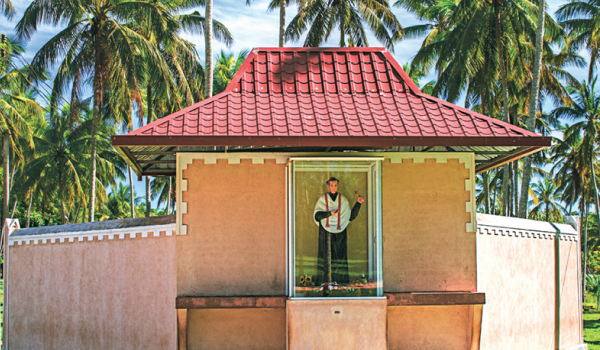
The Miraculous Statue of St. Anthony
There is an interesting legend about this sacred statue of St. Anthony. Once, some enemies destroyed this great church and plundered all the valuable things in the church except this statue. The villagers had somehow hidden this statue made of wood, only six inches in height, in a rice-pot and was able to save it from enemies. As the Catholics of Wahakotte faced much harassment from the Dutch and the Kandyan rulers, they erected a place of worship in a secret place under Rev. Fr. Joseph Vaz. During the day, it looked like a cattle-shed, but at night, it was a prayer room.
When Wahakotte celebrations are held now, the statue of St. Anthony is taken in a procession to this sacred place, and in holy prayer, the Catholics pay homage to Rev. Fr. Joseph Vaz. The historic Wahakotte religious festival, portrays the story of Catholics, who, without any help from organised clergy, maintained the Catholic faith for over 200 years in purely, non-Catholic surroundings. Today, Wahakotte, or Wasala-Kotte, which once flourished as a royal city, holds a unique place in the history of Catholics in Sri Lanka.
In times of tribulation, the people of Wahacotte sought the help of St. Anthony. During persecution, they assembled in secret around the statue to pray, and they carried the statue in procession in times of drought and plague. At the turn of the 18th century, there was a severe drought in “Kandapahala Korale” (Wahacotte), with all water tanks dry. For three days, the Catholic community prayed to St. Anthony, and at the conclusion of their prayer, the drought ended with torrential rain. The Catholics and non-catholics had organised a “Perahera” procession, to mark this miracle.
Even today, some neighbouring Buddhists speak of this miraculous power of St. Anthony. These grateful neighbours, it is said, had brought gifts to St. Anthony in a solemn manner, accompanied by the Kandyan “Hewisi” band, and accorded by popular acclamation the right to use “Hewisi” at the Catholic feast at Wahakotte. “Hewisi” is not used in many other churches, as it was mainly the privilege of kings. Still, Buddhists come to Wahakotte, a church festival from “Kandapahala Korale,” with their “Hewisi,” and make this feast a symbol of unity among Buddhists and Catholics.
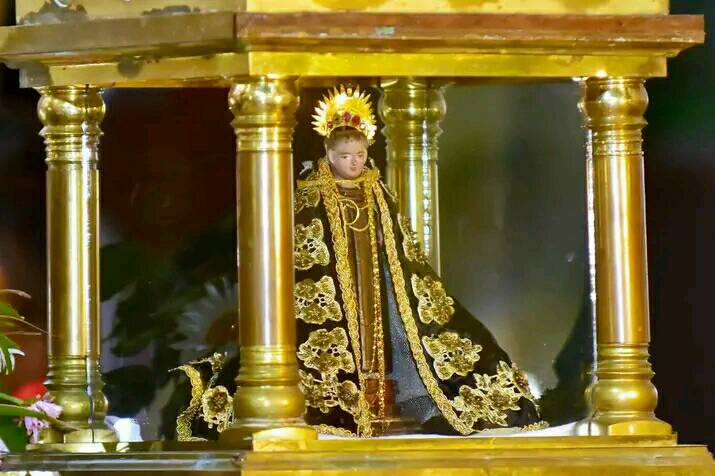
Getting to St. Anthony’s Church Wahakotte
St. Anthony’s Church Wahakotte is one of the most historic shrines for Catholics in Sri Lanka. This church is situated in Udugoda Palelsiya Pattuwa, to the northwest of Matale district, four miles from Galewela town on the Matale-Galewela main road. It is about 140 Km from Colombo, through Warakapola-Kurunegala, Galewela and Wahakotte. From Kandy, it is about 55 km via Matale-Palapathwela and Wahakotte, and from Negambo, it is about 130 km. through Kurunegala-Galewela and Wahakotte. From Chilaw it is about 120 km along Kurunegala-Galewela and Wahakotte.
The Parish of Wahacotte
After bringing the entire island under their control, the British granted religious freedom, and the Catholics began to enjoy the newly found freedom to practice their religion. It was after 1821 that Catholic priests visited Wahacotte officially on a regular basis. In 1886, Rev. Fr. Benedict Perera, OSB, became the first resident priest at Wahacotte. The mission of Wahacotte was given to the Benedictines in exchange for the Cathedral Church of Kandy. With Rev. Fr. Lanfranc Assauw, OSB, becoming the first ever parish priest, Wahacotte was carved out as a full-fledged parish in 1888.
From then on, the Benedictines have been the custodians of this parish and shrine, except for the short stint of Rev. Fr. F.M. Goonetillege (Miss. Apost) from 1918 to 1925. The dedicated services helped the mission territory of Wahacotte develop in leaps and bounds, beyond the geographical boundaries of Wahacotte proper. There are 1,132 Catholic families, spread over the main church, St. Anthony’s National Shrine Wahakotte and eight other substation churches coming under the jurisdiction of this shrine parish.
Calvary of St. Anthony’s Church Wahakotte
The mural-style calvary on a hillock overlooking Dambulla is the jewel in the crown of Wahakotte. The choice of this singular place was made by Rev. Fr. Sebastian OSB way back in 1956. From then on, there had been a gradual development by the parish priests who served in the parish. Today, the Calvary at Wahacotte stands tall unmatched by any other because of its natural and scenic beauty and draws a large number of pilgrims during the season of lent. Customarily, it is the death, not the birth, of a saint that is celebrated as feast day. St. Anthony’s National Shrine Wahakotte celebrates two feasts: as usual, the remembrance of the heavenly birth of St. Anthony in June and the remembrance of his birth on earth in August. The birthday of the saint falls on August 15.
As Tuesday is dedicated to St. Anthony, devotees throng the different places of worship dedicated to St. Anthony, and Wahacotte is no exception. Two masses are celebrated for the convenience of the people. Special devotions are held at St. Anthony’s Church Wahakotte on the first Tuesdays of every month. Every year, the miraculous status of St. Anthony is taken in procession around the village on the day of the village feast. The status casket is kept on a table specially prepared at the four corners and the main entry point of the village. Then traditional prayers composed by Fr. Jacome Gonsalves are recited, along with prayers for protection from insects, epidemics, conspiracies, and natural calamities. True to their faith, Wahacotte has enjoyed divine protection throughout.
St. Anthony’s National Shrine Wahakotte enjoys yet another specialty in the singing of Pasan, the singing of the Passion Narrative, with a special tradition of chanting melody much different from the singing of Pasan in other places, unique to Wahacotte. There are two types of narratives: the traditional passion narrative and the other Passion narrative, Sermons Deshanaya. During the season of Lent, the whole-night vigil singing of this passion narrative is organised by different groups at different locations and houses.
St. Anthony’s National Shrine Wahakotte Annual Feast
The annual feast of historic Wahakotte Church will be held on June with a festive high mass.
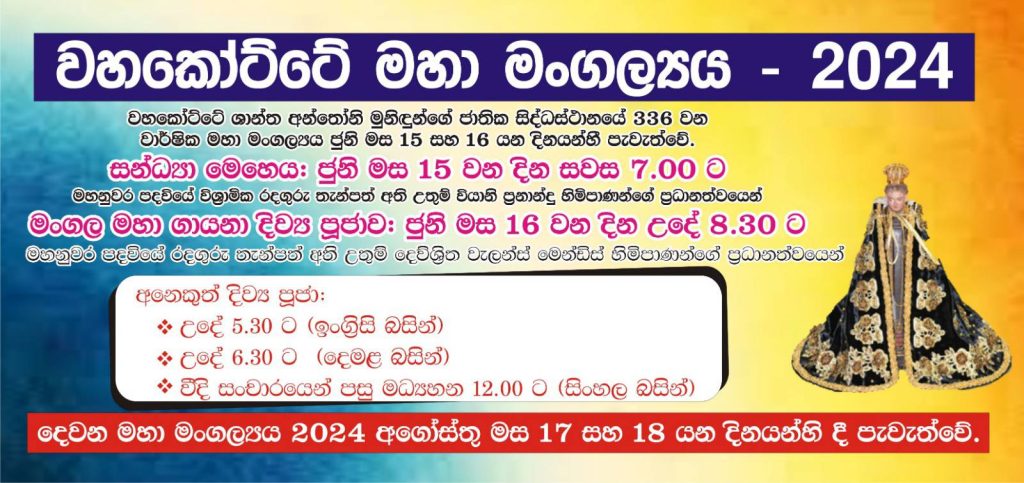
Important Information
- Feast Day – 17 June
- Church Visiting Time: Everyday, 7.00 am to 7.00 pm
- Address: St. Anthony’s National Shrine, Wahakotte, Matale, Sri Lanka
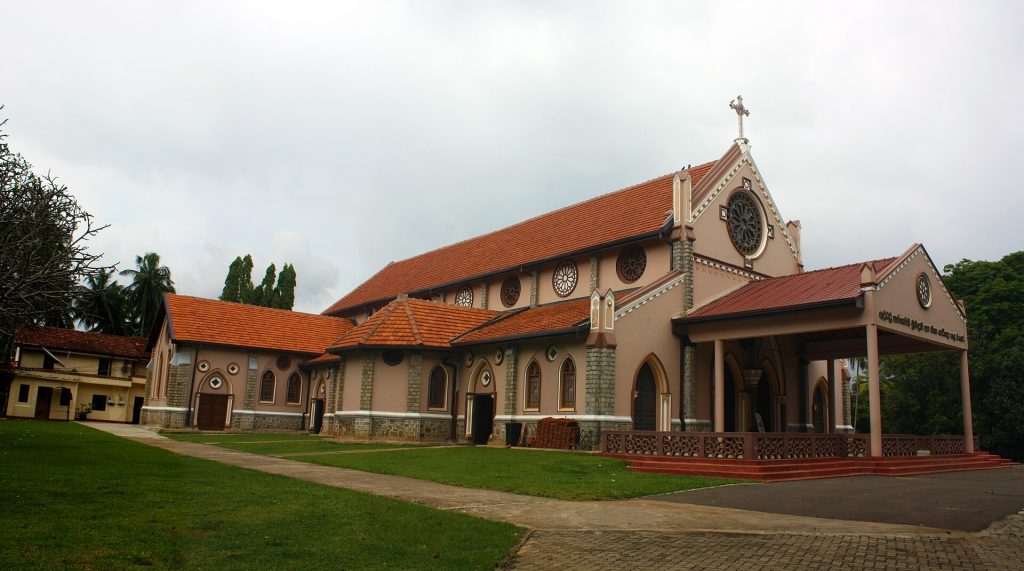
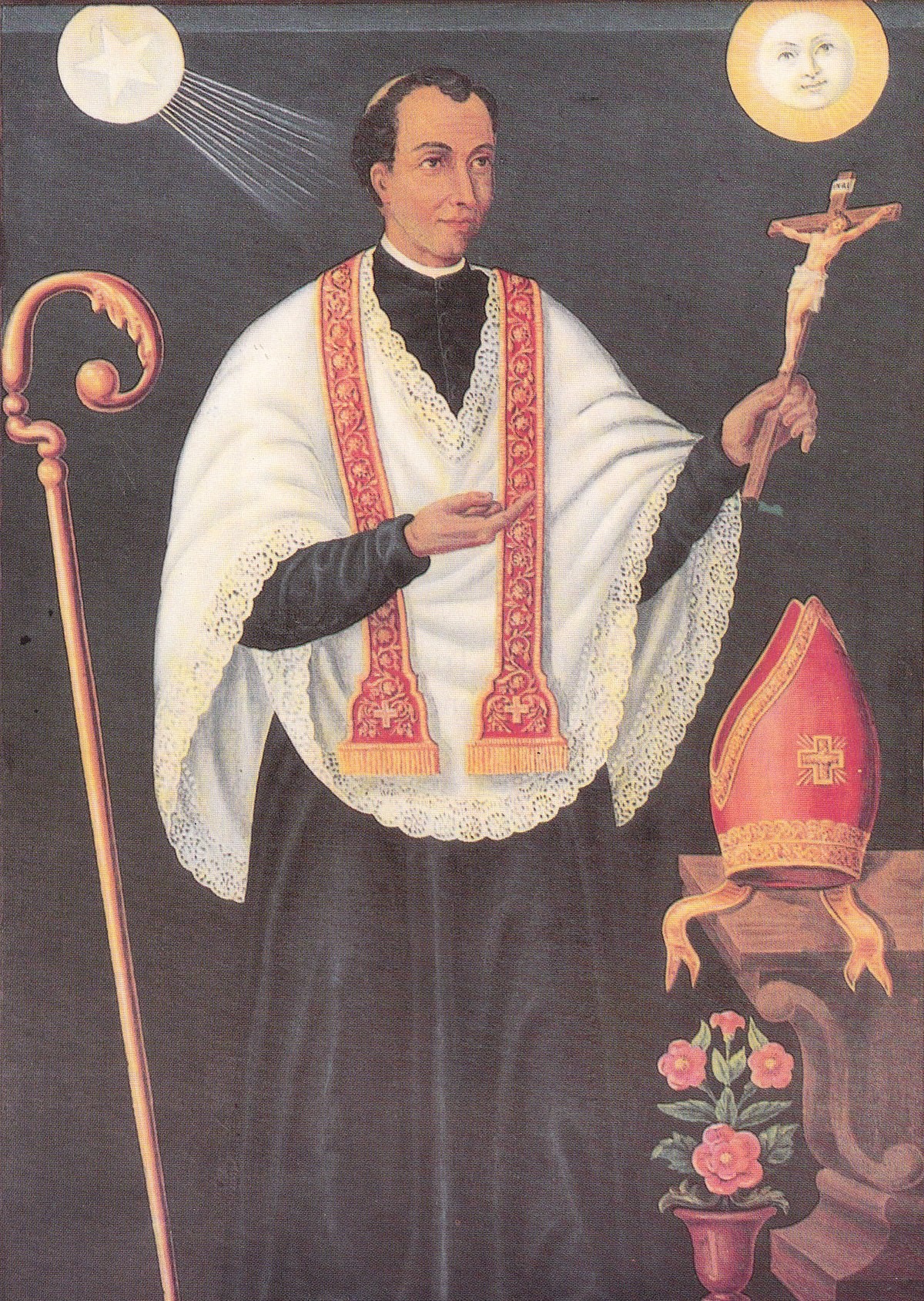
Affiliate Disclosure: As an Amazon Associate, I earn from qualifying purchases. This blog post may contain other affiliate links as well by which I earn commissions at no extra cost to you.

